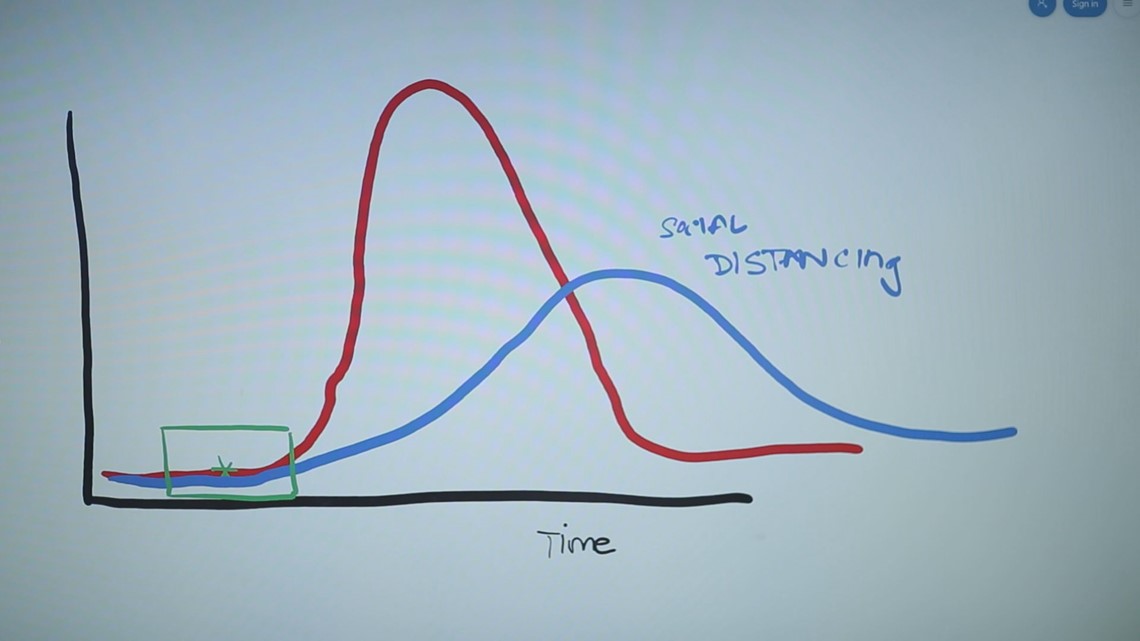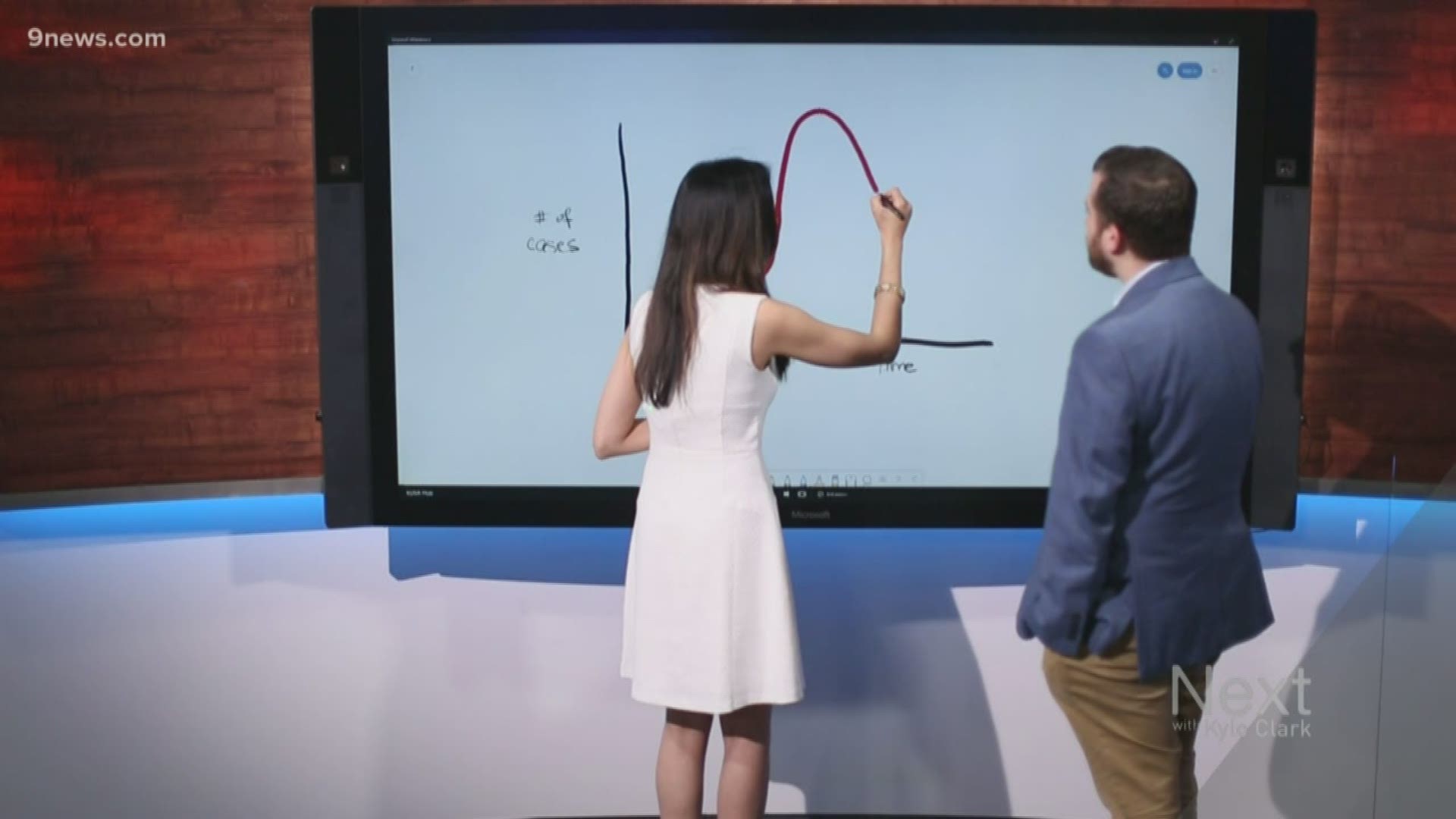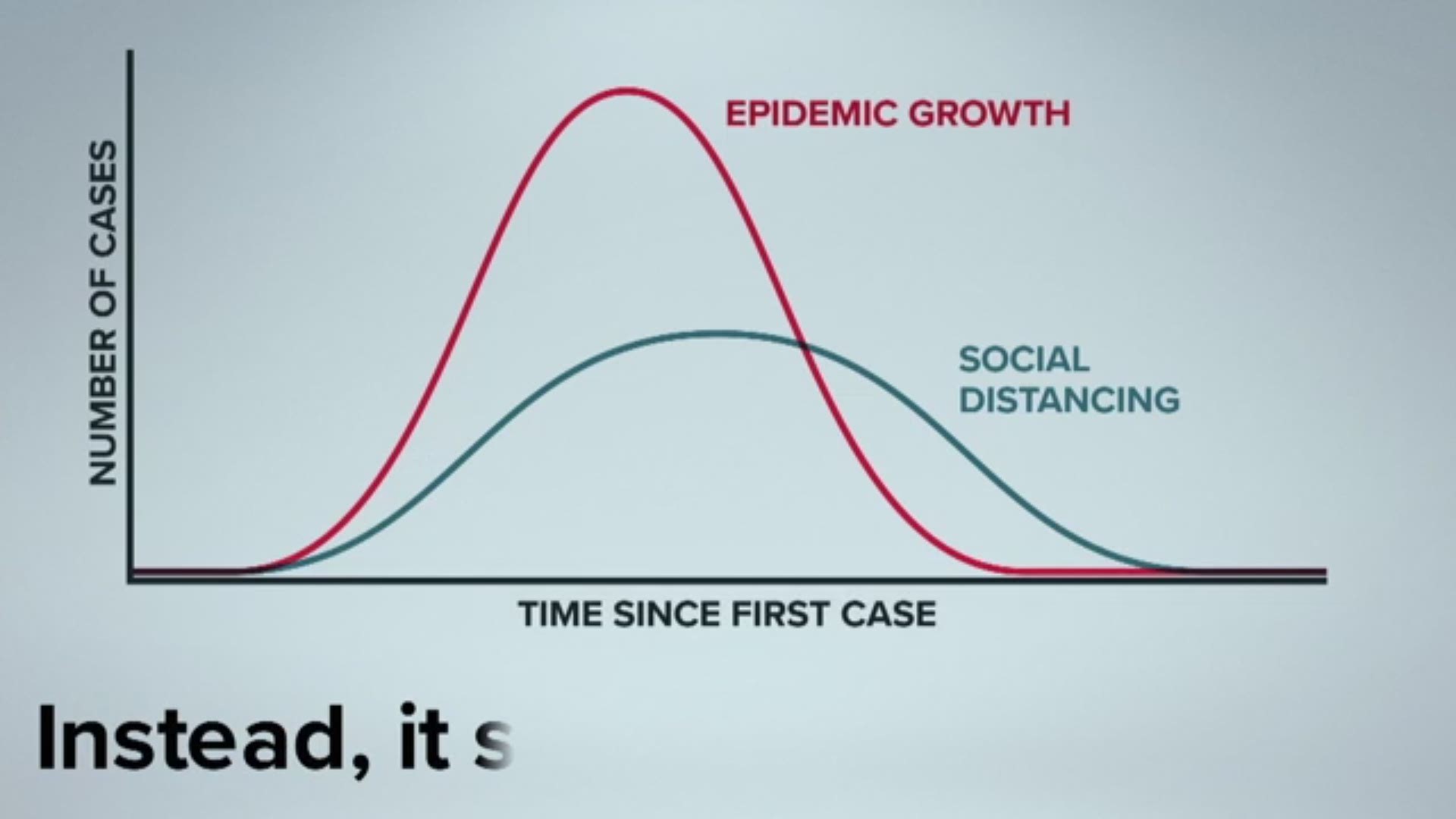DENVER — Over the weekend, a chart that was first published in a scientific journal called the Lancet first made the rounds on social media. What it essentially does is depict the different ways a disease like COVID-19 can spread depending on basic changes we can make as a society.
Sure, it might be a little scary, but 9Health Expert Dr. Payal Kohli said it should actually make you feel empowered.
Take a look at the chart below:
What the red line shows is how COVID-19 could spread over time without any intervention. Everyone below the red line is infected with the disease, and at its peak, it could negatively impact everything from the healthcare system to the economy.
Colorado, which has 11 confirmed cases of the new coronavirus as of this writing, is nowhere near a potential peak, Kohli said. Instead, it's at the time right before the bell curve starts to get steeper – meaning the virus could still play out in the community in a different way than if it were allowed to naturally run its course.
As you can see from the photo below, Colorado is near where the blue curve and red curve intersect. You already know what the red curve means. The blue curve represents what could happen if the population practices something called “social distancing.”


“Social distancing is essentially changing your behavior so you’ve avoided situations or events where you could spread the virus,” Kohli said.
As you can see from the graph, with social distancing, a virus’ spread can be slowed, and at its peak, there won’t nearly be as many cases. Because it doesn’t run its course quite as quickly, its lifespan is longer, but also less severe.


“I want people to understand social distancing is not a scary thing,” Kohli said.
Instead, she said it involves the things people should be doing already: washing their hands and staying home if they’re sick. While places like China have gone as far as to close schools in the face of a COVID-19 outbreak, Kohli said the U.S. is not quite at that point.
Instead, she recommends that people do what they can to avoid mass gatherings that could further spread the disease. And that includes everyone – not just those at risk (the Centers for Disease Control and Prevention has already warned that elderly people should practice some social distancing already).
“If a healthy person does social distancing, they’re less likely to get the virus themselves … or transmit it to an at-risk community,” Kohli said.
And that’s why Kohli said the graph showing a potential spread of COVID-19 should empower you instead of make you scared. It means that you still have control over the situation.
“If we all band together at this time and start to do these important behaviors, it will be a new thing in the trajectory of the virus,” Kohli said. “In a year, I’m hopeful we’ll be back to our lives as usual.”
Watch Dr. Kohli explain further in the video below:
SUGGESTED VIDEOS: COVID-19 Coronavirus



